
By Kasey Cantwell - NOAA Office of Ocean Exploration and Research
April 13, 2015
Yes, this fish has legs—or at least modified fins that resemble legs. This Chaunax, or sea toad, began to “walk” away as D2 approached during our exploration of the west wall of Mona Canyon. Video courtesy of the NOAA Office of Ocean Exploration and Research, Exploring Puerto Rico’s Seamounts, Trenches, and Troughs. Download (mp4, 29.9 MB)
So far we have seen some pretty fantastic animals during Océano Profundo 2015. The deep ocean is full of weirdly fantastic fauna – organisms that often seem strange and foreign to us. Although they live on the same planet, the realities of their world are so different than our own. They live in a world under extreme pressure and cold temperatures and they never see light from the sun. So much of the deep sea is unexplored that it isn’t hard to find something that hasn’t been seen before and amazes us.
During this expedition, my favorite animals have been the ones that look a little bit odd and a little bit like they shouldn’t exist. Below are some of my favorites so far, but don’t hold me to this list—we’ve only done four dives and every day remotely operated vehicle (ROV) Deep Discoverer (D2) and our fantastic team of video engineers and pilots capture more incredible creatures.
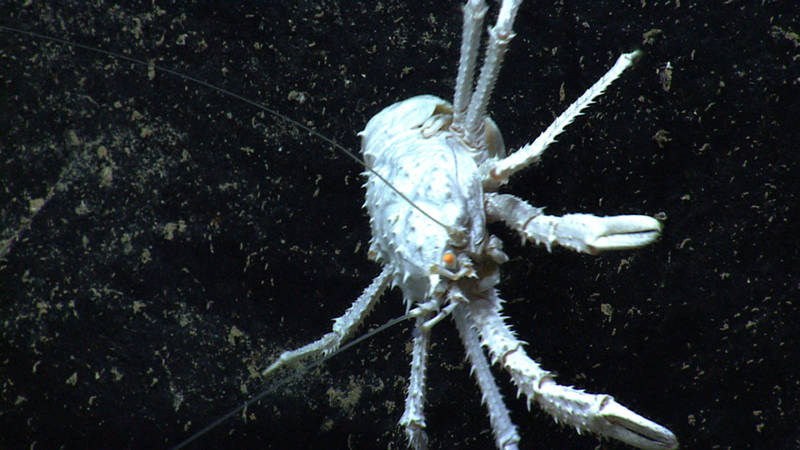
Despite its name, squat lobsters are most closely related to hermit crabs and mole crabs, not lobsters. We have seen them in a variety of colors during this cruise and past cruises, but the white ones seem to be a more common occurrence at deeper depths. Image courtesy of the NOAA Office of Ocean Exploration and Research, Exploring Puerto Rico’s Seamounts, Trenches, and Troughs. Download larger version (jpg, 1.6 MB).
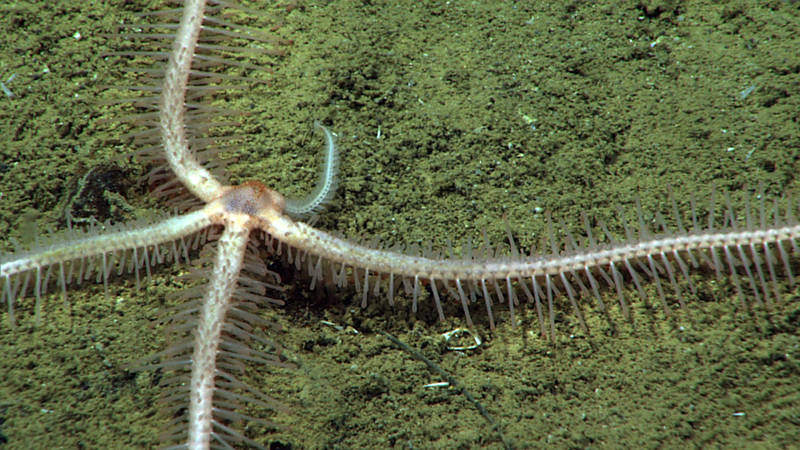
Brisingid sea stars, like most sea stars, are capable of regenerating their arms if one is removed. This one is in the process of re-growing its fifth arm. Image courtesy of the NOAA Office of Ocean Exploration and Research, Exploring Puerto Rico’s Seamounts, Trenches, and Troughs. Download larger version (jpg, 1.6 MB).
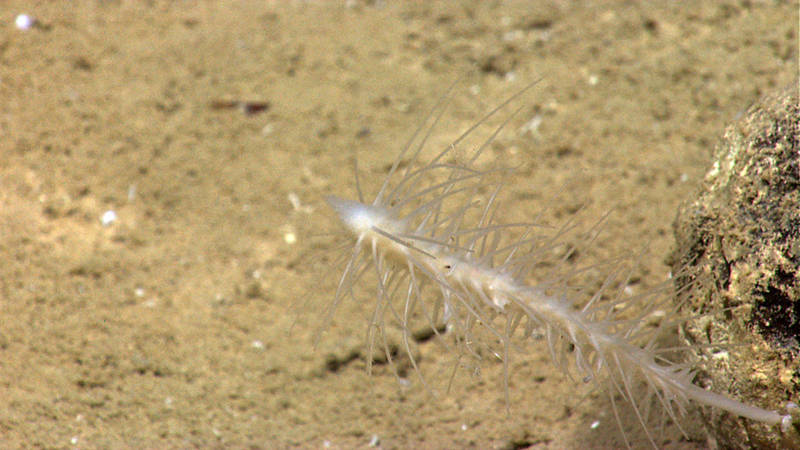
This crazy-looking creature is a carniverous sponge. Most people do not think of sponges as living organisms, but they are one of the most primitive animals. Image courtesy of the NOAA Office of Ocean Exploration and Research, Exploring Puerto Rico’s Seamounts, Trenches, and Troughs. Download larger version (jpg, 1.6 MB).
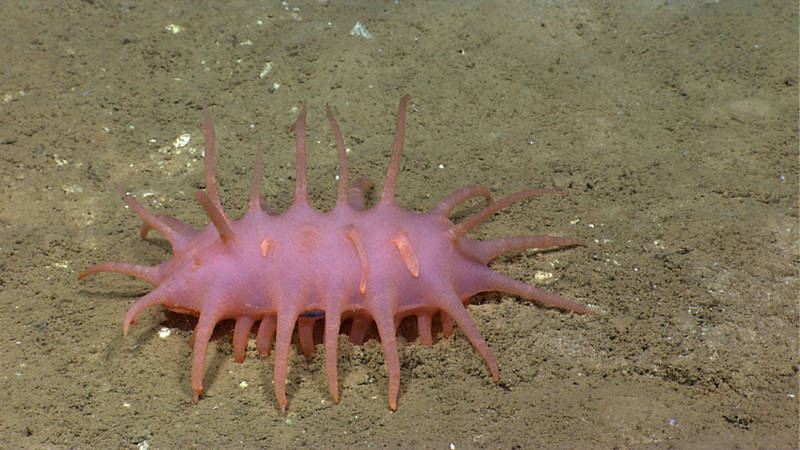
Sea cucumbers are always one of my favorite animals to see on a dive, if only because I’m always interested to see what they will look like this time! Internally, they are pretty much all the same, but their exteriors can be completely see through or a variety of colors, flattened, or spikey, like this one. I am not exactly sure what determines their shape, but there has to be some benefit for each morphology. Image courtesy of the NOAA Office of Ocean Exploration and Research, Exploring Puerto Rico’s Seamounts, Trenches, and Troughs. Download larger version (jpg, 1.5 MB).
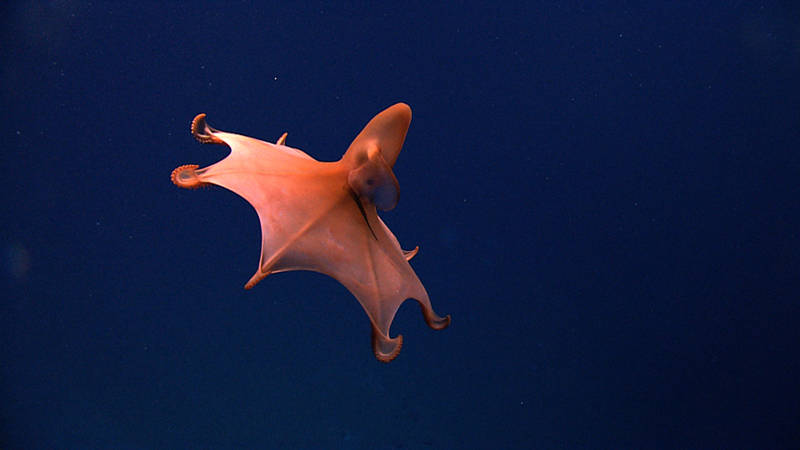
This rare dumbo octopus (Cirrothauma murrayi) is often called the Blind Octopod due to the lack of a lens and reduced retina in its eyes. Its eyes can really only detect light and cannot form images. Image courtesy of the NOAA Office of Ocean Exploration and Research, Exploring Puerto Rico’s Seamounts, Trenches, and Troughs. Download larger version (jpg, 1.5 MB).
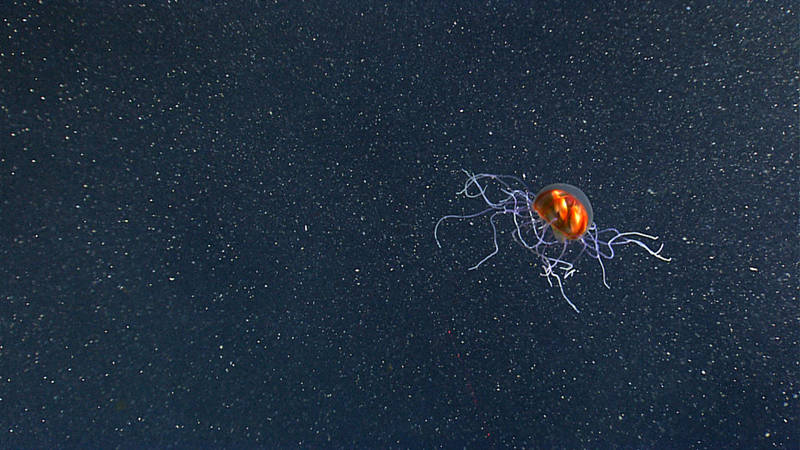
We spotted this trachymedusae just above the seafloor along the west wall of Mona Canyon. While you may see shallow-water jellyfish all the time, it is often very difficult to collect information about deep-sea jellyfish as they break up in nets and are hard to keep intact if collected. This is one of the reasons why our videographers always try to get good, detailed shots of gelatinous animals. Image courtesy of the NOAA Office of Ocean Exploration and Research, Exploring Puerto Rico’s Seamounts, Trenches, and Troughs. Download larger version (jpg, 1.8 MB).
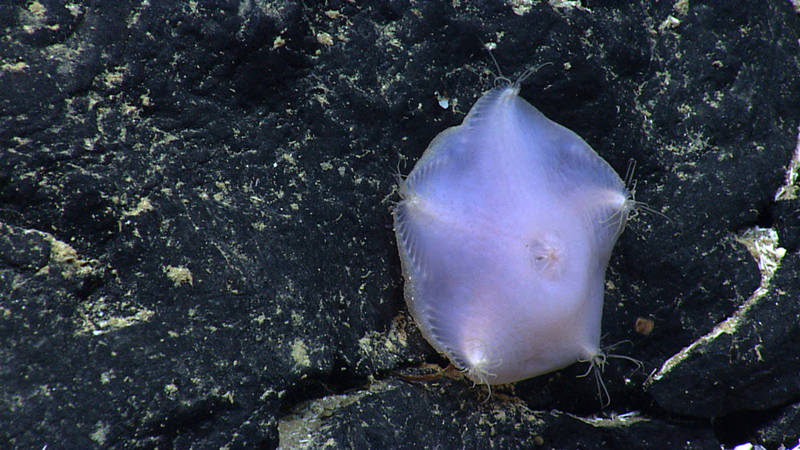
Most people are familiar with sea stars, but there is incredible diversity of sea stars in the deep sea and several don’t look anything like their shallow-water relatives. This is a slime star, and if you look really closely through the mucus layer, you can see a shape that may look a little more familiar. Slime stars are found all over the world and have the ability to produce mucus as a defense mechanism. Image courtesy of the NOAA Office of Ocean Exploration and Research, Exploring Puerto Rico’s Seamounts, Trenches, and Troughs. Download larger version (jpg, 1.7 MB).
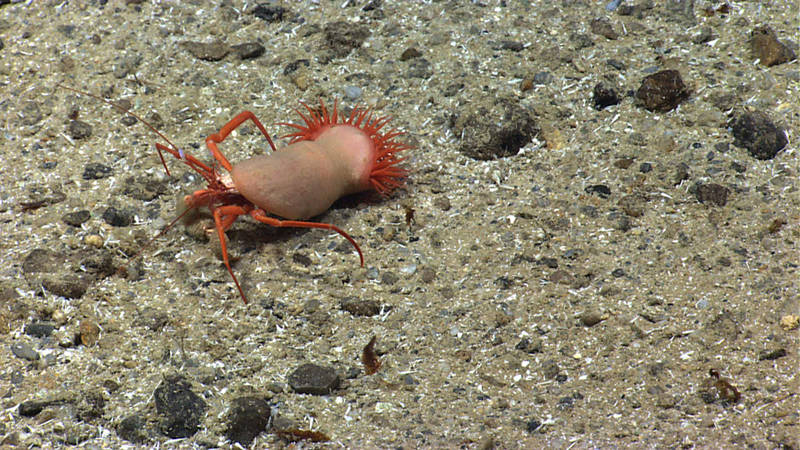
This hermit crab may seem similar to something you have seen on land or in shallow water, but this one uses an anemone instead of a shell! Image courtesy of the NOAA Office of Ocean Exploration and Research, Exploring Puerto Rico’s Seamounts, Trenches, and Troughs. Download larger version (jpg, 1.9 MB).
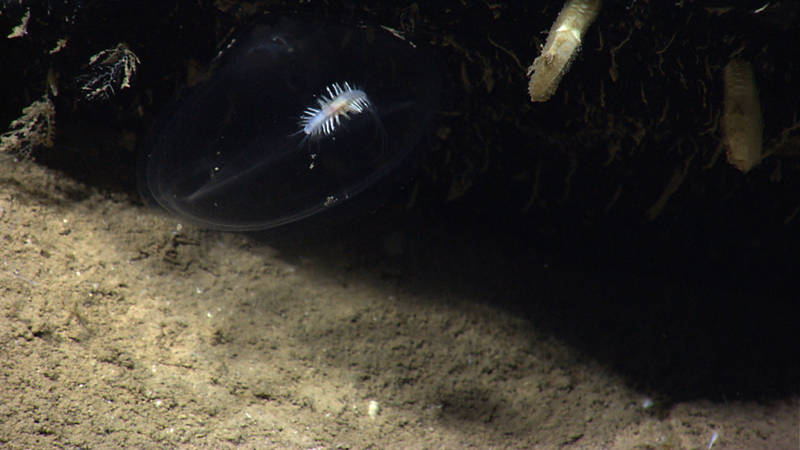
This is a predatory tunicate with a polychaete living with it. During Dive 4 of Océano Profundo, we saw several of these, with only one polychaete per tunicate, which has our science team thinking that there might be a relationship between the two that benefits one or both of them. Image courtesy of the NOAA Office of Ocean Exploration and Research, Exploring Puerto Rico’s Seamounts, Trenches, and Troughs. Download larger version (jpg, 1.3 MB).